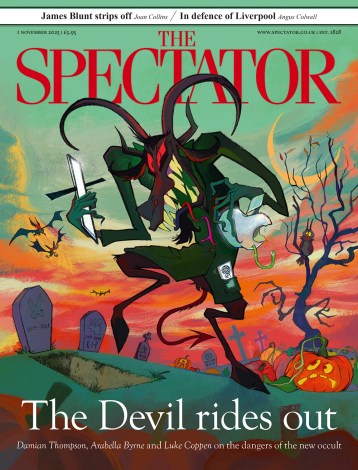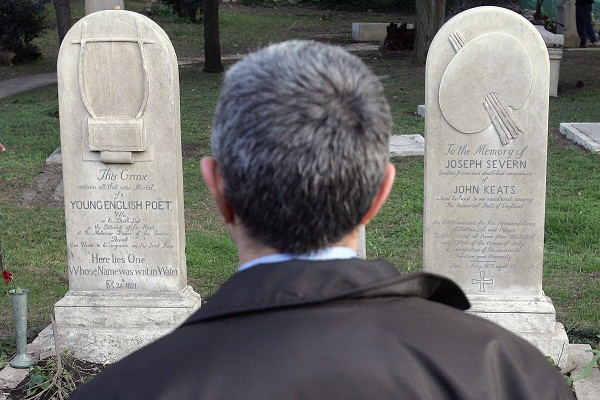The joke has been made by Jack Stillinger, an American editor of Keats, that there have been so many treatments of the poet’s life that we know him better than his contemporaries did, and better than most people we see every day. This brilliant new biography by eminent Keatsian Nicholas Roe has caused controversy with the claim that Keats was an opium addict. The book’s blurb is certainly angled to capitalise on this, and states that it will ‘[explode] entrenched conceptions of [Keats] as a delicate, overly sensitive, tragic figure.’ But surely, one would think, Keats being a drug addict on top of the tuberculosis and early death should enlarge his tragic currency?
Luckily, Roe’s biography is much less sensationalist than the publicity makes out. He gives us a sensitive, thorough and broad reading of Keats. The London childhood and school years are brought to life more completely than they have been in the past, as is his friendship with the charismatic polymath critic/ poet Leigh Hunt ( – Roe has written a biography of him, too). He is very good on financial detail and seems to be the accountant Keats desperately needed. We are often reminded of an inheritance which Keats never received, as if we were the tantalised readers of a Dickens novel. Keats’s relationship with Fanny Brawne, on the other hand, takes a back seat. Introduced in the final quarter of the book, it is given little more attention than Keats’s affairs with two other women: Isabella Jones and Jane Cox.
Roe’s controversial new theories about the poet (of which the opium claim is one of many) are usually as persuasive as they are imaginative. Though other recent biographers have recognised that Keats may have suffered from gonorrhoea, Roe indicates that Keats believed himself to be suffering from syphilis at twenty-two, and his self-medication with mercury may have weakened his immune system, hastening the onset of tuberculosis.
To go with this scrutiny of Keats’s innocence, we have a scrutiny of his earnestness in literary matters. In the preface, Roe mentions ‘an uncanny sense that what I, and other biographers, thought he was doing had no bearing at all on the actuality of [Keats’s] life’. Thus, Roe is open to Keats as a self-conscious performer in his letters and poems, encoding things with a wry smile. Some of Keats’s most famous lines, ‘often read as a touchstone of Keats’s “negative capability,”’ are taken as a nod to a lifestyle of casual sex which would have been obvious to those who knew him. The addiction to laudanum, too, is ‘never explicitly admitted,’ the evidence being that his friend Charles Brown warned him of the ‘danger of such a habit,’ implying a use already habitual. Roe puts lack of other references to laudanum down to its popularity as a medicine: it was ‘so routine as not to be worth mentioning.’ But it seems a rather tenuous leap when this lack enables Roe to claim that Keats’s 1819 Odes can be read as ‘a case study of opium’s effects,’ and that ‘Ode to a Nightingale’ is ‘one of the greatest re-creations of a drug-inspired dream-vision in English literature.’
Brilliant literary academics have historically made wacky arguments from inference – William Empson, for instance, argued that Coleridge’s poem ‘The Ancient Mariner’ was ‘all about’ the slave trade precisely because it never mentions the slave trade – and whether you value Roe’s book will largely depend on whether you support this kind of approach, or whether you are generous to the trial and error of an inquiring mind at work. For me, Roe’s conjectures are what make the biography lively. I’m willing to forgive him, though I recognise that the opium thread – being both Roe’s least rigorous argument and the unique selling point of the book – may cause problems for some readers of this otherwise rigorous book.
His mission to make us fully inhabit Keats’s present, however, sometimes comes with inappropriate novelistic detail. We are shown what the poet sees or what he gazes at (Roe uses the verb ‘gazed’ rather too much – even in novels, characters shouldn’t ‘gaze’). As Keats ‘gazed across Moorfields he could see regiments of volunteer soldiers.’ In a carriage by night: ‘As he gazed out his world contracted to a bright hoop cast by the coach lamps. Hurdles and palings. The glitter of a window. Lopped trees.’ This puts Roe’s prose weirdly off-balance, as it pretends to add colour to what is a sufficiently colourful work.
Elsewhere, Roe’s style is subtly clear. He often gives the impression of being absolute master of his material, leaping between the letters, poems and various other documents in order to date the exact moment of a line’s inception. The very fact of Roe’s filling out the life of somebody alive two hundred years ago in such detail is remarkable. It is reconstructed for us day by day, and Roe seems to regret it when a few go by without Keats giving an account of himself to his friends. Andrew Motion’s biography is two hundred pages longer than this but doesn’t achieve the richness of Roe’s. Possibly the only positive to come out of Keats dying at twenty-five, we feel, is that such a dense rendering of his life isn’t exhaustive in length. John Keats: A New Life does what a good literary biography should: it makes you want to revisit the work of its subject, and, in light of this, understand so much more.
John Keats: A New Life by Nicholas Roe is published by Yale University Press (£25:00)






Comments